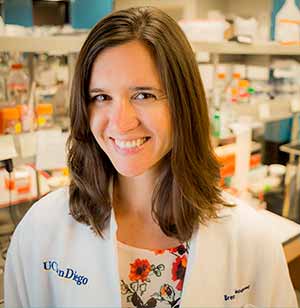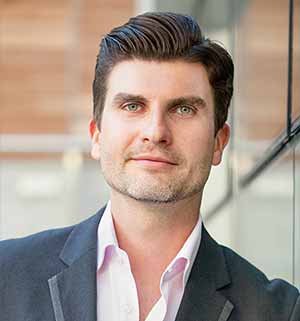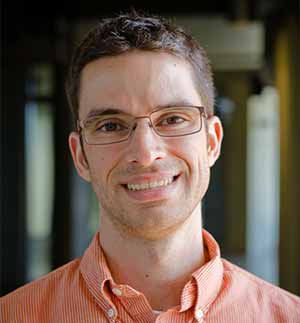
Four UC San Diego Faculty Receive NIH New Innovator Awards
Published Date
By:
- Kim McDonald
Share This:
Article Content
Four professors at UC San Diego will receive New Innovator Awards from the National Institutes of Health of approximately $2.2 million over the next five years to support their “unusually innovative research,” the NIH announced today.

Eric Bennett
They are Eric Bennett and Brenda Bloodgood, assistant professors of biology in the Division of Biological Sciences; Kamil Godula, an assistant professor of chemistry and biochemistry in the Division of Physical Sciences; and Darren Lipomi, an assistant professor of nanoengineering in the Jacobs School of Engineering.
The four faculty members are among only 41 scientists nationwide who will receive the NIH Director’s New Innovator Award, which is designed to support early career biomedical medical researchers pursuing high-risk, high-reward research efforts.
Bennett will receive his award for research on integrated molecular and systems-level approaches to uncover and define cellular pathways that can be specifically manipulated to limit the accumulation of defective and harmful proteins.
“The decoding of genetic material into the proteins that carry out all cellular and tissue functions is a relatively error-prone process,” he explained. “As such, numerous cellular systems have been put in place to both limit the production and facilitate the removal of defective protein products. Defects in the cellular protein quality control system have been linked to a large array of human aging associated pathologies including neurodegenerative disorders and cancer.”

Brenda Bloodgood
Bloodgood and colleagues in her laboratory will be undertaking a research effort to elucidate the cellular mechanisms that allow active synapses to rapidly communicate to the nucleus of nerve cells, which has been a major challenge for the field of neurobiology.
“Signaling from the synapse to the nucleus is essential for the maintenance of long term memories,” she explained in her proposal.

Kamil Godula
Godula and colleagues in his laboratory are developing chemical tools for the manipulation of carbohydrate structures, called glycans, on the surfaces of stem cells. “We are particularly interested in glycans that contribute to the activation of signaling pathways associated with differentiation,” he said. “This award will allow us to create new techniques for tailoring glycan interactions on stem cells after transplantation to guide their differentiation toward cell types with regenerative potential in the complex settings of a living tissue.”

Darren Lipomi
Lipomi is working to develop a new class of wearable and implantable organic electronic materials that have properties resembling those of human tissue. Different from other research on “electronic skin,” Lipomi’s research is aimed at creating organic electronic materials that are extremely elastic, biodegradable and capable of self-repair, similar to biological tissues. The work will focus on how to synthesize and modify electronics at the molecular level so that they can have some of the same properties as human skin and tissue.
“We’re proposing a platform technology that would offer a more seamless integration of synthetic electronic systems with the human body than what is currently available,” said Lipomi. “The idea behind this technology is to take a semiconducting material, like a silicon wafer, and improve it by incorporating properties inspired by biological tissue. This research will significantly re-design electronic materials by making electronic plastics that are not only capable of conducting charge, but can respond well to biological stimuli and be comfortably worn inside and outside the body.”
Long-term applications of this technology include an artificial retina, electronic-skin-like grafts that can restore the sense of touch to prosthetic limbs, and an integrated device capable of continuously monitoring pressure within the skull to determine any associated traumatic brain injury.
More information on the New Innovator Award, which was established in 2007, and on this year’s 41 awardees is available at: nih.gov
Share This:
You May Also Like
Stay in the Know
Keep up with all the latest from UC San Diego. Subscribe to the newsletter today.


